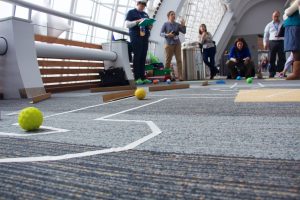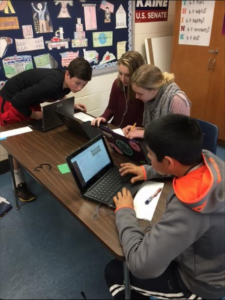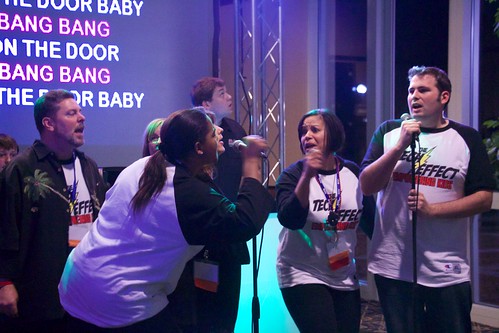 I am sure most of you have heard of the terms “digital immigrants” and “digital natives.” All of us born before technology infiltrated our lives are “immigrants” and the ones born into this technology world are “natives.” There is a misconception by many educators that the “digital natives” in our classrooms are very tech savvy and know so much more than we could ever learn when it comes to using technology. Some educators are a bit intimidated by their students because handling technology seems to come naturally to them. Most students do not fear the technology since they have always been around it their entire lives. In reality, it all comes down to attitude. Even us “digital immigrants” can adapt and become as comfortable as the “natives” and I am proud to say that many have! Another reality we educators must come to understand is that just because a student is comfortable with technology does not mean they know how to maximize its use for learning!
I am sure most of you have heard of the terms “digital immigrants” and “digital natives.” All of us born before technology infiltrated our lives are “immigrants” and the ones born into this technology world are “natives.” There is a misconception by many educators that the “digital natives” in our classrooms are very tech savvy and know so much more than we could ever learn when it comes to using technology. Some educators are a bit intimidated by their students because handling technology seems to come naturally to them. Most students do not fear the technology since they have always been around it their entire lives. In reality, it all comes down to attitude. Even us “digital immigrants” can adapt and become as comfortable as the “natives” and I am proud to say that many have! Another reality we educators must come to understand is that just because a student is comfortable with technology does not mean they know how to maximize its use for learning!
I have had the privilege of teaching many instructional technology graduate-level courses for a local university for many years now. It has been very rewarding to work with current educators as we learn and share effective ways to utilize technology to help students learn. This semester I have the special opportunity to teach an undergraduate course on instructional technology for the first time at a local university. I have twenty students in my class which consists of mostly Juniors, but there a couple of Sophomores and a few Seniors. They are all digital natives! They cannot imagine life without the Internet, cell phones and social media. It did not take me long to figure out that even though they were natural texters, Snapchatters and Instagramers, (not sure if these are actual terms!) they had much to learn on how technology could impact not only their learning but their teaching! You should have seen their faces when they saw how the Explore option in Google Sheets could automagically generate numerous charts to represent their data. None of them had ever heard of Padlet and after using several in class to provide feedback on various articles I assigned them they enjoyed creating their own which allowed for audio, video and drawing feedback. They experienced a backchannel for the first time using TodaysMeet. Finally, they were able to use EdPuzzle to take video viewing to a new level. You could feel the energy and hear the ideas of how these tools could make a difference in their instruction. The learning has been a two-way street! It has been exciting when they share ideas and tips on various digital tools. Teaching is a great way to learn!
So, when any of you “digital immigrants” stand before a confident, “I know it all,” bunch of “digital natives,” just remember they have much to learn when it comes to the effective use of technology. Don’t worry, they will not have any fear of using it, so show them how powerful instructional technology can be!

timtaylor@vste.org
Shenandoah County Public Schools
Director










